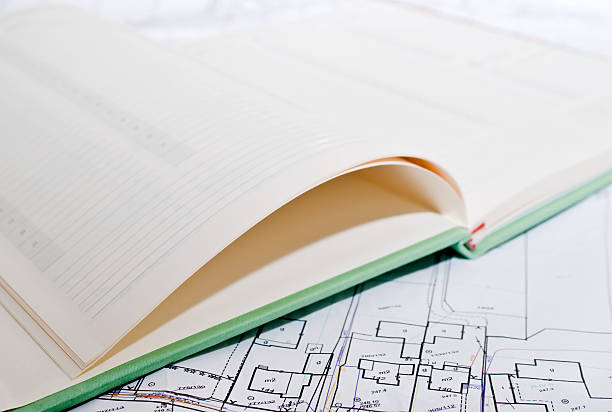Introduction
The world of architecture thrives on both creativity and practicality. Among the many resources available to professionals, one term that sparks curiosity is architects journal price gore. While it may sound complex at first, it reflects the intersection of cost analysis, architectural publications, and influential designs associated with figures like Sir Norman Foster and Sir Gore Vidal’s influence on cultural commentary.
This guide examines the concept from multiple perspectives. You’ll discover what the term represents, how it ties into architectural practice, why it matters to students and professionals, and how journals like The Architects’ Journal have shaped pricing discourse across decades.
Understanding the Term “Architects Journal Price Gore”
At first glance, “architects journal price gore” may seem like an unusual phrase. However, when broken down, it highlights three essential aspects:
- Architects’ Journal – A leading publication for architecture professionals.
- Price – Cost transparency in design, construction, and project planning.
- Gore – A reference to places, projects, or even influential contributors in the architectural discourse.
By merging these elements, the phrase embodies the balance between creativity, practicality, and contextual influence within the industry.
The Role of Architects’ Journals in Shaping Knowledge
Architectural journals have always been more than magazines. They serve as repositories of knowledge, case studies, and debates. For instance, The Architects’ Journal has published landmark reports on construction economics, sustainability, and design awards.
Why Professionals Rely on Journals
- Current Trends – Journals track shifts in materials, sustainability, and urban design.
- Cost Insights – Pricing models and economic studies guide feasibility.
- Design Inspiration – Showcasing global projects stimulates creative thinking.
- Policy Discussions – They influence regulations and design standards.
Therefore, exploring architects journal price gore provides insight into how publications merge pricing realities with creative discourse.
Historical Context of Price and Architecture
Architecture has always been bound by cost. From Gothic cathedrals funded by monarchies to modern skyscrapers shaped by corporate budgets, price defines ambition.
- Renaissance Era – Wealthy patrons commissioned monumental works.
- Industrial Revolution – Mass production lowered material costs, shifting styles.
- Modernism – Architects pursued functional yet cost-conscious designs.
- Post-War Period – Journals highlighted reconstruction budgets and public housing.
Today, cost transparency remains crucial. Journals publish price indexes, allowing professionals to benchmark projects.
The Gore Connection in Architecture
The word “Gore” can connect to both place and concept.
- Gore in Geography – Often refers to triangular pieces of land, common in urban planning.
- Gore as a Surname – Several architects, engineers, and patrons named Gore contributed to architectural history.
- Cultural Commentary – Thinkers like Gore Vidal influenced societal critiques, indirectly shaping design conversations.
Thus, architects journal price gore may signify architectural discussions where place, cost, and cultural influence converge.
Why Pricing Matters in Architectural Practice
Aesthetic visions inspire, yet without cost awareness, projects fail.
Core Reasons
- Budget Control – Prevents overruns that damage reputations.
- Client Trust – Accurate estimates foster stronger relationships.
- Material Selection – Pricing guides choices between luxury and sustainable alternatives.
- Innovation – Constraints encourage creativity in design solutions.
Journals documenting “price gore” case studies emphasize how architects can balance artistry with affordability.
Key Sections in Architects’ Journal Price Reports
Professional journals often categorize price reports into specific themes:
- Residential Projects – Affordability studies and housing innovations.
- Commercial Architecture – Cost models for offices, retail, and mixed-use spaces.
- Sustainable Design – Evaluating eco-friendly materials versus traditional options.
- Urban Development – Budgetary breakdowns for public spaces, roads, and civic buildings.
These categories allow architects to tailor strategies to client expectations and market realities.
The Impact of Location: Price Gore Case Studies
Location determines cost. In places called “Gore” worldwide, unique case studies highlight challenges and opportunities.
Example Insights
- Gore, New Zealand – Known for community projects blending culture and budget awareness.
- Urban Gores in Cities – Small, awkward land parcels often become innovative public spaces.
- Historical Estates by Families Named Gore – Heritage preservation offers lessons on balancing cost and authenticity.
By documenting such examples, architects journal price gore extends beyond numbers to narratives.
Tools and Techniques for Pricing in Architecture
Modern professionals use a range of strategies to manage costs.
- BIM (Building Information Modeling) – Real-time price simulations.
- Cost Indexes – Journal-published benchmarks across regions.
- Life-Cycle Costing – Considering long-term maintenance, not just upfront costs.
- Value Engineering – Optimizing designs for cost-efficiency.
With these, architects move beyond guesswork to informed financial planning.
Sustainability and Pricing in Architecture
Green building practices often seem more expensive. However, journals prove long-term savings through:
- Energy efficiency
- Renewable materials
- Reduced maintenance
- Higher property values
Architects focusing on price gore debates often argue for sustainability as both ethical and economical.
Future Trends in Architectural Pricing
- AI Integration – Predictive algorithms to optimize budgets.
- Modular Construction – Pre-fabricated components lowering costs.
- Smart Materials – Long-term savings through durability.
- Globalization – Access to affordable materials worldwide.
Journals covering these trends show how pricing evolves with technology and culture.
How Students Can Use Architects Journal Price Gore
For students, price-focused journals offer:
- Real-world case studies for assignments
- Exposure to economic decision-making
- Templates for project budgeting
- Lessons from past architectural successes and failures
Thus, students bridge theory with professional practice.
Challenges in Interpreting Price Reports
Even journals face obstacles:
- Regional variations in labor and material costs
- Inflation and currency shifts
- Political or environmental disruptions
- Ethical debates on cost-cutting measures
Critical thinking remains vital when applying architects journal price gore insights.
Benefits of Following Architects’ Journal Pricing Sections
- Stay Updated – Global pricing trends at your fingertips.
- Competitive Edge – Better cost strategies than rivals.
- Professional Growth – Awareness builds credibility with clients.
- Networking – Journals connect architects through shared debates.
FAQs: Architects Journal Price Gore
1. What does “architects journal price gore” mean?
It refers to pricing insights, architectural journals, and contextual case studies linked with cost and design.
2. Why do architects need price reports?
They ensure accurate budgeting, client trust, and project feasibility.
3. Are journals reliable sources for pricing data?
Yes, professional journals compile industry-backed research and indexes.
4. How does “Gore” connect to architecture?
It may refer to geographical places, historical figures, or urban design concepts involving triangular land parcels.
5. Can students benefit from architects’ journals?
Absolutely, they gain real-world exposure beyond classroom theory.
6. How do sustainability costs compare with traditional methods?
Upfront costs may be higher, but long-term savings and ecological benefits outweigh them.
7. Do all journals publish price indexes?
Not all, but leading ones like The Architects’ Journal frequently release price-focused sections.
8. How do digital tools impact pricing accuracy?
BIM and AI-based tools provide real-time cost simulations, improving precision.
9. Are there regional differences in architectural pricing?
Yes, labor, material availability, and regulations greatly influence cost.
10. Will pricing in architecture become more standardized in the future?
Global collaboration may bring more standardization, yet local variations will persist.

